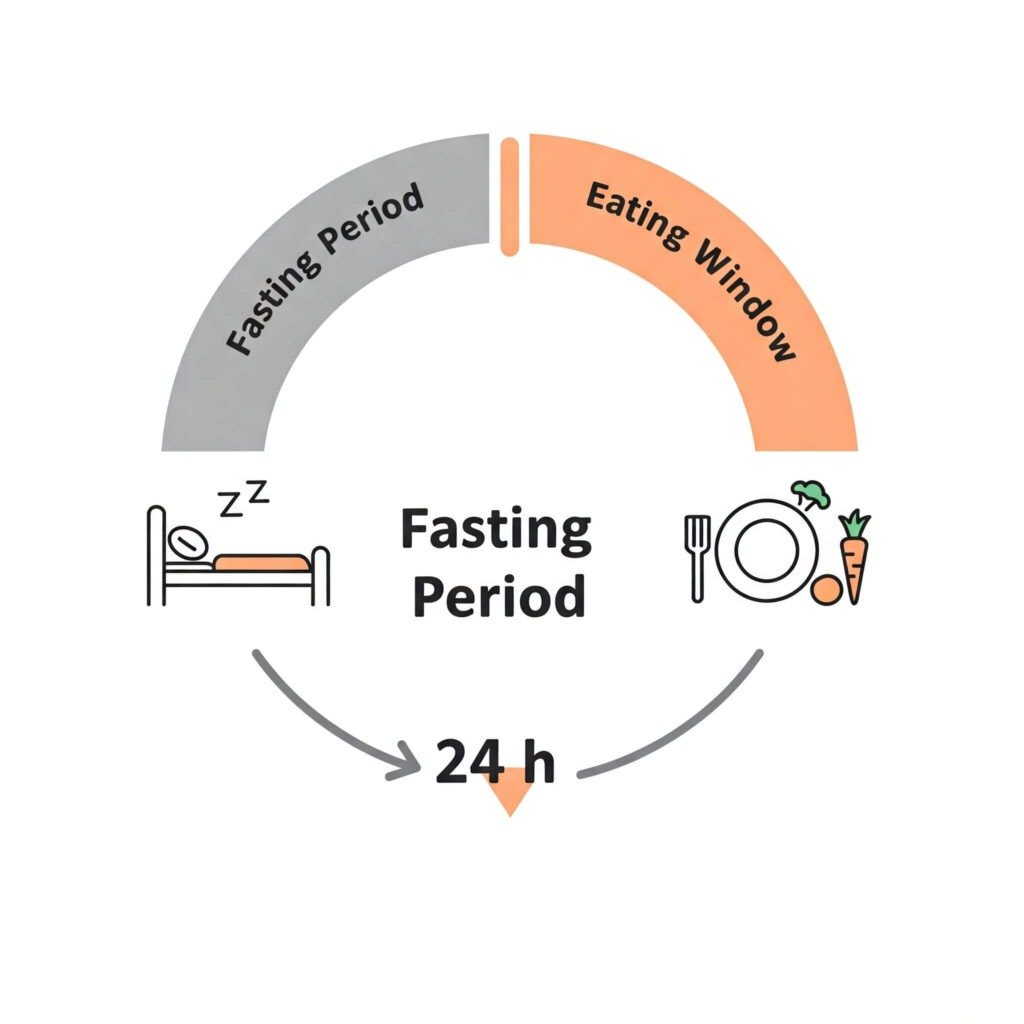Welcome to your introduction to Intermittent Fasting (IF), a popular eating pattern centered around when you eat rather than what. If you’re curious about a different approach to your eating habits and the potential health benefits it may offer, you’ve come to the right place. This beginner-friendly guide will walk you through the fundamentals of this time-restricted eating approach and how you can begin to explore it.
Understanding the Core Principles of Time-Restricted Eating
At its heart, this eating pattern involves strategically timing your meals, creating regular cycles of eating and voluntary fasting. This focus on when you consume food can encourage your body to utilize stored energy. Unlike diets that primarily focus on calorie restriction, Intermittent Fasting emphasizes these defined eating and fasting windows.

Why Explore the Benefits of Time-Restricted Eating?
Many individuals are exploring this approach for its potential advantages, which can include:
- Achieving Healthy Weight Management with IF: By incorporating regular periods of food abstinence, the body may tap into fat reserves for energy, potentially leading to weight reduction. Research continues to investigate the efficacy of Intermittent Fasting for weight management. ([Outbound Reference Link to a reputable study on Intermittent Fasting and weight loss, e.g., PubMed Central])
- Potentially Improving Insulin Sensitivity Through Fasting: This dietary approach may positively influence blood sugar regulation and enhance the body’s responsiveness to insulin, a key benefit often associated with Intermittent Fasting.
- Supporting Natural Cellular Repair During Your Fasting Window: During periods of caloric restriction, the body can initiate vital cellular repair mechanisms like autophagy, a process that Intermittent Fasting can facilitate.
- Simplifying Your Meal Routine with a Defined Eating Window: By establishing a specific timeframe for eating, meal planning can become more streamlined, and overall calorie consumption may naturally decrease when practicing Intermittent Fasting.
- Experiencing Increased Energy and Focus While Practicing IF: Some individuals report heightened mental clarity and sustained energy levels during their fasting periods, making Intermittent Fasting appealing for those seeking improved focus.
Common Beginner-Friendly IF Schedules to Consider
There are several ways to approach this eating pattern, and finding a sustainable method is key to long-term success. Here are a few common starting points for those new to Intermittent Fasting:
- Trying the 16/8 Method for Your Initial Fasting Experience: This involves a daily 16-hour fasting period followed by an 8-hour eating window. A common example is eating between noon and 8 pm and fasting for the remaining hours, often seen as an accessible initial approach to Intermittent Fasting.
- Exploring the 5:2 Diet as a Flexible Fasting Strategy: With this plan, you maintain a regular eating pattern for five days of the week and significantly reduce your calorie intake on two non-consecutive days, offering a flexible way to incorporate Intermittent Fasting.
- Understanding the Eat-Stop-Eat Method for More Intense Fasting: This involves a complete 24-hour fast once or twice a week and might be considered a more advanced fasting technique for beginners interested in Intermittent Fasting.

Tips for Starting Your Journey with Time-Restricted Eating
If you’re interested in trying this eating approach, here are some initial steps:
- Begin Gradually with Your Fasting Periods: Avoid making drastic changes immediately. Start with a shorter overnight fast, such as 12 hours, and progressively extend your fasting window as you feel comfortable with Intermittent Fasting.
- Maintain Optimal Hydration During Your Fast: Ensure you drink ample water, unsweetened tea, or black coffee during your fasting times to stay hydrated and help manage any feelings of hunger associated with Intermittent Fasting.
- Be Attuned to Your Body’s Signals While Fasting: Pay close attention to your body’s cues and avoid pushing yourself excessively, particularly when you are first starting Intermittent Fasting. If you feel unwell, it is advisable to break your fast.
- Focus on Nutrient-Rich Foods During Your Eating Window: During the times you are eating while practicing Intermittent Fasting, prioritize consuming whole, unprocessed foods to ensure you are obtaining the necessary vitamins and minerals for overall health. ([Outbound Reference Link to a reputable nutrition website, e.g., Academy of Nutrition and Dietetics])
- Practice Patience and Consistency with IF: Allow time for your body to adapt to this new eating pattern. Be patient with the process and aim for consistency with your chosen method of Intermittent Fasting to observe how it integrates into your lifestyle.
Strategies to Support Your Time-Restricted Eating Goals
To potentially enhance the benefits of this eating style, consider incorporating these complementary practices:
- Incorporate Regular Physical Activity Alongside Your IF Routine: Exercise can work synergistically with Intermittent Fasting to support your overall health and fitness objectives.
- Prioritize Sufficient Sleep for Optimal Fasting Results: Ensuring you get adequate, high-quality sleep plays a crucial role in hormone regulation, which can influence your appetite and metabolism during Intermittent Fasting.
- Manage Stress Effectively While Practicing IF: Elevated stress levels can impact your overall well-being. Explore and incorporate stress-reducing techniques into your daily life to support your journey with IF.

Important Considerations Before Trying Time-Restricted Eating
While this eating approach can offer significant benefits for many, it is not universally suitable. Certain individuals should exercise caution or avoid Intermittent Fasting altogether:
- Individuals who are currently pregnant or breastfeeding
- Those with a prior history of eating disorders
- People with specific underlying medical conditions, such as type 1 diabetes
- Individuals who are currently taking certain types of medications
It is always recommended to consult with a qualified healthcare professional before making substantial changes to your dietary habits, including starting a time-restricted eating pattern like IF.
Final Thoughts on Exploring Time-Restricted Eating
This eating pattern offers a flexible and potentially beneficial framework for managing your relationship with food and achieving various health improvements. By understanding the different methods available within IF, starting at a comfortable pace, and remaining attentive to your body’s responses, you can explore how this approach might seamlessly integrate into your lifestyle and contribute to your overall well-being. Consider embarking on your exploration today and discovering the optimal approach that suits your individual needs within the realm of Intermittent Fasting!





































